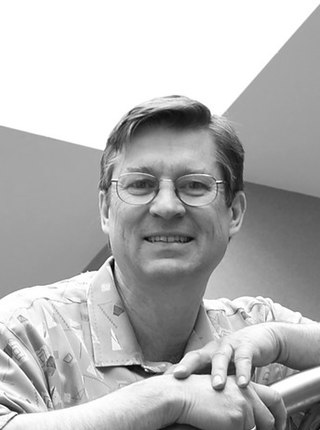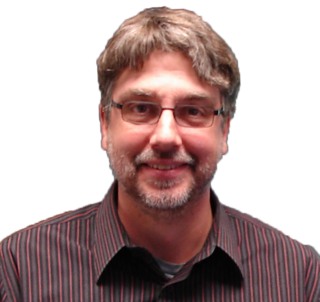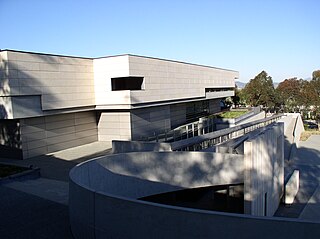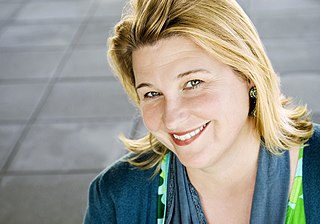Related Research Articles

Cognitive science is the interdisciplinary, scientific study of the mind and its processes with input from linguistics, psychology, neuroscience, philosophy, computer science/artificial intelligence, and anthropology. It examines the nature, the tasks, and the functions of cognition. Cognitive scientists study intelligence and behavior, with a focus on how nervous systems represent, process, and transform information. Mental faculties of concern to cognitive scientists include language, perception, memory, attention, reasoning, and emotion; to understand these faculties, cognitive scientists borrow from fields such as linguistics, psychology, artificial intelligence, philosophy, neuroscience, and anthropology. The typical analysis of cognitive science spans many levels of organization, from learning and decision to logic and planning; from neural circuitry to modular brain organization. One of the fundamental concepts of cognitive science is that "thinking can best be understood in terms of representational structures in the mind and computational procedures that operate on those structures."

Neuroscience is the scientific study of the nervous system, its functions and disorders. It is a multidisciplinary science that combines physiology, anatomy, molecular biology, developmental biology, cytology, psychology, physics, computer science, chemistry, medicine, statistics, and mathematical modeling to understand the fundamental and emergent properties of neurons, glia and neural circuits. The understanding of the biological basis of learning, memory, behavior, perception, and consciousness has been described by Eric Kandel as the "epic challenge" of the biological sciences.

Cognitive neuroscience is the scientific field that is concerned with the study of the biological processes and aspects that underlie cognition, with a specific focus on the neural connections in the brain which are involved in mental processes. It addresses the questions of how cognitive activities are affected or controlled by neural circuits in the brain. Cognitive neuroscience is a branch of both neuroscience and psychology, overlapping with disciplines such as behavioral neuroscience, cognitive psychology, physiological psychology and affective neuroscience. Cognitive neuroscience relies upon theories in cognitive science coupled with evidence from neurobiology, and computational modeling.
Computational neuroscience is a branch of neuroscience which employs mathematical models, computer simulations, theoretical analysis and abstractions of the brain to understand the principles that govern the development, structure, physiology and cognitive abilities of the nervous system.

Christof Koch is a German-American neurophysiologist and computational neuroscientist best known for his work on the neural basis of consciousness. He is the president and chief scientist of the Allen Institute for Brain Science in Seattle. From 1986 until 2013, he was a professor at the California Institute of Technology.
Terrence Joseph Sejnowski is the Francis Crick Professor at the Salk Institute for Biological Studies where he directs the Computational Neurobiology Laboratory and is the director of the Crick-Jacobs center for theoretical and computational biology. He has performed pioneering research in neural networks and computational neuroscience.

The Conference and Workshop on Neural Information Processing Systems is a machine learning and computational neuroscience conference held every December. The conference is currently a double-track meeting that includes invited talks as well as oral and poster presentations of refereed papers, followed by parallel-track workshops that up to 2013 were held at ski resorts.

Andrew G. Barto is an American computer scientist, currently Professor Emeritus of computer science at University of Massachusetts Amherst. Barto is best known for his foundational contributions to the field of modern computational reinforcement learning.
Computational and Systems Neuroscience is an annual scientific conference for the exchange of experimental and theoretical/computational approaches to problems in systems neuroscience. It is an important meeting for computational neuroscientists where many levels of approaches are discussed. It is a single track-meeting with oral and poster sessions and attracts about 800-900 participants from a variety of disciplines, including neuroscience, computer science and machine learning. Until 2018, the 3-day long main meeting was held in Salt Lake City, followed by two days of workshops at Snowbird, Utah. In 2018, COSYNE moved to Denver and Breckenridge.
Francis Otto Schmitt was an American biologist and Institute Professor at the Massachusetts Institute of Technology.

James Mason Bower is an American neuroscientist and CEO and chairman of the Board of Numedeon Inc., creator of the Whyville.net educational virtual world. He graduated from McQuaid Jesuit High School in Rochester, New York attending Antioch College and Montana State University as an undergraduate and then received his PhD in neurophysiology from the University of Wisconsin–Madison, U.S. in 1982. From 1984 until 2001, he was a professor at the California Institute of Technology and from 2001 until 2013 he was a professor at the University of Texas Health Science Center at San Antonio. At present he is an affilaite professor of Biology at Southern Oregon University.
Emery Neal Brown is an American statistician, neuroscientist, and anesthesiologist. He is the Warren M. Zapol Professor of Anesthesia at Harvard Medical School and at Massachusetts General Hospital (MGH), and a practicing anesthesiologist at MGH. At MIT he is the Edward Hood Taplin Professor of Medical Engineering and professor of computational neuroscience, the associate director of the Institute for Medical Engineering and Science, and the Director of the Harvard–MIT Program in Health Sciences and Technology.

Olaf Sporns is Provost Professor in Psychological and Brain Sciences at Indiana University and scientific co-director of the university's Network Science Institute. He is the founding editor of the academic journal Network Neuroscience, published by MIT Press.

Wolfgang Prinz is a German cognitive psychologist. He is the director of the Max Planck Institute for Human Cognitive and Brain Sciences in Leipzig, Germany, and an internationally recognized expert in experimental psychology, cognitive psychology and philosophy of mind. He is the founder of the common coding theory between perception and action that has a significant impact in cognitive neuroscience and social cognition.
Hyunjune Sebastian Seung is President at Samsung Electronics & Head of Samsung Research and Anthony B. Evnin Professor in the Princeton Neuroscience Institute and Department of Computer Science. Seung has done influential research in both computer science and neuroscience. He has helped pioneer the new field of connectomics, "developing new computational technologies for mapping the connections between neurons," and has been described as the cartographer of the brain.

The Neurosciences Institute (NSI) was a small, nonprofit scientific research organization that investigated basic issues in neuroscience. Active mainly between 1981 and 2012, NSI sponsored theoretical, computational, and experimental work on consciousness, brain-inspired robotics, learning and memory, sensory processing, and motor control.
Cognitive musicology is a branch of cognitive science concerned with computationally modeling musical knowledge with the goal of understanding both music and cognition.

Tania Singer is a German psychologist and social neuroscientist and the scientific director of the Max Planck Society's Social Neuroscience Lab in Berlin, Germany. Between 2007 and 2010, she became the inaugural chair of social neuroscience and neuroeconomics at the University of Zurich and was the co-director of the Laboratory for Social and Neural Systems Research in Zurich. Her research focuses on the developmental, neuronal, and hormonal mechanisms underlying human social behavior and social emotions such as compassion and empathy. She is founder and principal investigator of the ReSource project, one of the largest longitudinal studies on the effects of mental training on brain plasticity as well as mental and physical health, co-funded by the European Research Council. She also collaborates with the macro-economist Dennis Snower on research on caring economics. Singer's Caring Economics: Conversations on Altruism and Compassion, Between Scientists, Economists, and the Dalai Lama was published in 2015. She is the daughter of the neuroscientist Wolf Singer.
The Dehaene–Changeux model (DCM), also known as the global neuronal workspace or the global cognitive workspace model is a part of Bernard Baars's "global workspace model" for consciousness.

The Department of Brain and Cognitive Sciences at the Massachusetts Institute of Technology, Cambridge, Massachusetts, United States, engages in fundamental research in the areas of brain and neural systems, and cognitive processes. The department is within the School of Science at the MIT and began initially as the Department of Psychology founded by the psychologist Hans-Lukas Teuber in 1964. In 1986 the MIT Department of Psychology merged with the Whittaker College integrating Psychology and Neuroscience research to form the Department of Brain and Cognitive Sciences.
References
- 1 2 Article - announcing the death of F.O.Schmitt published October 4, 1995 by Massachusetts Institute of Technology News [Retrieved 2015-06-27]
- 1 2 Francis Otto Schmitt (1990). The Never-ceasing Search. American Philosophical Society. ISBN 9780871691880 . Retrieved 2015-06-28.(3 core areas - p.228, Whither & six work sessions + conferences - p.233, primary activity & ISP's triennually - p.234)
- ↑ G.C. Quarton; F.O. Schmitt; T. Melnechuk. The Neurosciences. A Study Program. Rockefeller Univ. Press New York 1967. Retrieved 2015-06-27.(ed. this source used to add < an inter-university and international organisation >)
- ↑ G.Adelman & B.Smith (1998). Francis Otto Schmitt 1903 - 1995 (PDF). Washington D.C.: National Academy of Sciences. pp. 9, 10. Retrieved 2015-06-28.
- ↑ Museum of M.I.T. [Retrieved 2015-06-28]